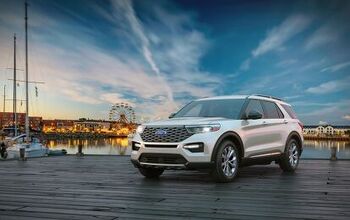A Specialer Special Edition: Toyota 86 to Add GT Variant for 2018

The Toyota 86 and its Subaru BRZ twin don’t get a lot of respect in a world where Ford, Chevrolet, and Dodge offer horsepower levels nearing infinity, but we’ll probably miss them when they’re gone. Rear-drive two-doors on the low end of the price scale are a very rare breed these days.
After last year’s Special Edition 86, Toyota’s uncharacteristically youthful sporting model undergoes further changes for 2018, this time offering up a GT variant that sounds fearful, but is actually anything but.
That’s because in this application, “GT” doesn’t mean the addition of more grunt. It’s all about creature comforts. According to a dealer order guide seen by Cars Direct, we now know the 2018 Toyota 86 GT maintains the status quo with respect to its powertrain, while adding features found on its slightly more upscale twin.
A good number of features also carry over from 2017’s Special Edition.
Moving up from a stock 86 to the GT brings heated leather seats and steering wheel, as well as a leather-wrapped parking brake handle and audio controls that migrate to the wheel. Dual-zone climate control, pushbutton start with proximity key, an anti-theft system, and a 4.2-inch performance specs display rounds out the new tech. Outside, new LED foglights and some sort of front-end aero enhancement sets the GT apart from its lesser sibling. There’s also some minor color accents to choose from.
Pricing for the 2018 86 GT starts at $29,280 after delivery, with an extra $720 needed to move from a six-speed manual to a six-speed automatic transmission. Doing so, of course, drops the 86’s output from 205 horsepower and 156 lb-ft of torque to 200 hp and 151 lb-ft. (Toyota hasn’t released 2018 pricing, but a base 2017 model starts at $27,150 after delivery.)
While the new GT variant might tempt buyers who would otherwise have chosen a BRZ Limited, its lack of extra power isn’t likely to see sports car aficionados suddenly talking about (and considering) the 86. The model’s U.S. sales have fallen each year since 2013, its first full year on the market. November’s sales, which amounted to 456 units in the U.S., fell 11.1 percent, year-over-year. Over the first 11 months of 2017, Toyota 86 sales are down 6.9 percent.
[Image: Toyota]

More by Steph Willems
Latest Car Reviews
Read moreLatest Product Reviews
Read moreRecent Comments
- Jkross22 When I think about products that I buy that are of the highest quality or are of great value, I have no idea if they are made as a whole or in parts by unionized employees. As a customer, that's really all I care about. When I think about services I receive from unionized and non-unionized employees, it varies from C- to F levels of service. Will unionizing make the cars better or worse?
- Namesakeone I think it's the age old conundrum: Every company (or industry) wants every other one to pay its workers well; well-paid workers make great customers. But nobody wants to pay their own workers well; that would eat into profits. So instead of what Henry Ford (the first) did over a century ago, we will have a lot of companies copying Nike in the 1980s: third-world employees (with a few highly-paid celebrity athlete endorsers) selling overpriced products to upper-middle-class Americans (with a few urban street youths willing to literally kill for that product), until there are no more upper-middle-class Americans left.
- ToolGuy I was challenged by Tim's incisive opinion, but thankfully Jeff's multiple vanilla truisms have set me straight. Or something. 😉
- ChristianWimmer The body kit modifications ruined it for me.
- ToolGuy "I have my stance -- I won't prejudice the commentariat by sharing it."• Like Tim, I have my opinion and it is perfect and above reproach (as long as I keep it to myself). I would hate to share it with the world and risk having someone critique it. LOL.


































Comments
Join the conversation
I've driven one around a track and while they are toss-able and fun you don't get the thrill of being pushed back into your seat. The main problem for me was the lack of torque. The tach moves but the car just kind of continues forward as if the numbers have no meaning. While some people like ultra smooth acceleration to me it felt like everything was happening in slow motion. My 350Z isn't "fast" especially compared to other pony cars but it at least feels like its trying due to having some grunt from the V6. I will give the FRS the advantage of being ridiculously easy to drive beyond 7/10ths. The steering and braking effort is super light compared to my Z. You could literally drive the FRS on track all day and not break a sweat as it feels like you could control it with just one hand. In the end I find my Z more rewarding on track because it feels like your doing something, the FRS was actually too easy - thus it never felt like I was driving "hard" even while pushing it. I understand the appeal... but I don't think I would own one as boredom would set in rather quickly. Basically its like a Miata but with a roof. I'm glad Toyota makes it, but I'll never understand why they didn't fit the trademark Subbie turbo under the hood. Just seems like a missed opportunity to have WRX power in a nicely balanced (and attractively styled) RWD package. Also never understood why it wasn't a hatchback either as a throwback to the older Toyota's (namesake 86, Celica & Supra).
"Rear-drive two-doors on the low end of the price scale are a very rare breed these days." Bullshit. Ford, Chevy, and Dodge all over rear drive two-doors for the same or less as the twins - with fantastic handling of their own (at least from Chevy and Ford) and LOTS more power (even if it is partially offset by extra weight). These cars, while delightful to drive, are not a value. Disclaimer - I owned an FR-S. It was great, but I wouldn't buy another one with the turbo-4 Mustang/Camaro sport suspension options out there.